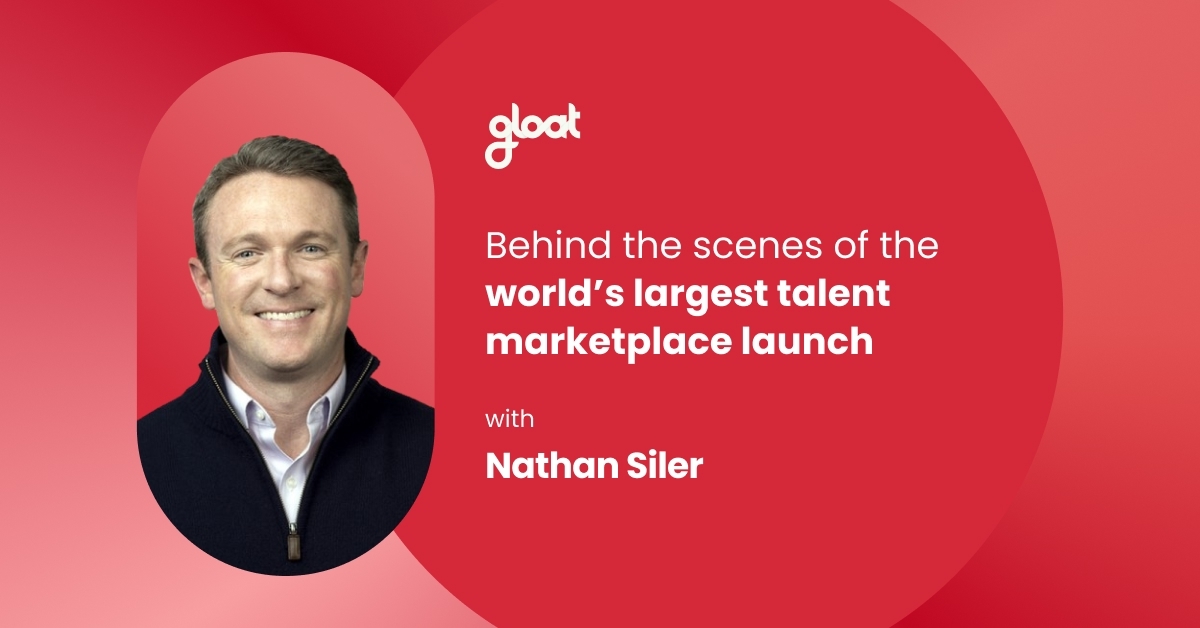How to reduce third-party spending through internal mobility
As companies look to enact cost-saving measures, utilizing the skills locked within your current workforce could be the key.

Managing organizational growth is a great problem to have: As market share expands and revenue increases, fixing a problem can feel as easy as throwing money at it and watching it solve itself.
Your company might have been in this phase during the economic growth period of the last decade. But as financial constraints tighten and economic headwinds gain momentum, organizations must consider what actions to take in order to keep growing despite stalling—or shrinking—budgets.
Third-party contractors can be a quick fix to fill skill gaps in the short term, but HR professionals know it’s not a long-term solution. By empowering your workforce to build skills that match their personal interests with your company’s needs, leaders can begin to reign in the exorbitant spending associated with external talent.
The true cost of third-party contractors
Though their flexibility is often their strength, contract workers make up a massive share of personnel expenses. A Deloitte study shows that 50% of companies surveyed spend more than $1 million every year on third-party workers, with the top 11% spending more than $10 million yearly. For a sector that can account for up to 70% of total business costs, finding the right balance between the flexibility of contractors and the institutional knowledge of full-time employees is critical for HR leaders to manage.
On top of the financial strain, your company’s values will never be as closely-held as your full-time workforce. Engaging your core personnel shows that their efforts are playing a major role in the success of the company, not a vendor that showed up for a few months.
Lessening the need for contractors through internal mobility
Although three in four enterprises believe that internal mobility is important, only 6% believe that their organization is ‘excellent’ at enabling mobility, according to a Deloitte survey. Similar to the issues facing employees trying to increase their skills, many employers understand the value of an agile workforce but do not know where to start.
The transition from looking outwards for talent to inwards requires a shift in mindset, as well as the tools to put that new mindset to work. Workforce agility platforms help you reduce your reliance on contractors and other third-party workers by powering 360-degree skills visibility, enabling you to uncover hidden talent inside your workforce. This foundational also allows you to increase democratic access (based on skills, not on who-knows-who) to opportunities for your employees.
Once you have skills visibility, breaking down jobs into projects and gigs will allow you to redeploy internal talent and match employees to tasks that align with their skills and capacity. From there, employees can use the talent marketplace to find the tools, resources, and opportunities to strengthen their skills and explore their interests—while aligning with your business needs. Instead of contracting out for a project manager, your entire workforce is activated to fill skill gaps before they emerge.
Engaging internal employees through opportunities
This shift in mindset, from finding third-party contractors to fill gaps to looking internally, has a powerful side effect: increasing employee engagement. A talent marketplace helps engage employees by providing the platform for their contributions to materialize. When given access to on-the-job opportunities, employee engagement increases by an average of 30% and creates a work environment built upon direct contribution
The value of an engaged workforce cannot be overstated; a Qualtrics survey shows that highly-engaged employees are 10% more likely to beat expected performance regardless of their position, and highly-engaged companies achieve 2.5x more revenue growth with 40% less churn.
4 steps to reduce third-party spending with workforce agility
To ready your workforce for what the future holds, here are four steps to take:
#1. Leverage workforce intelligence to track skill gaps
Good insights start with good data. Track the development of your employees and the skills they’ve obtained to learn where third-party costs can be reduced in favor of internal personnel.
#2. Empower employees to develop unique skill sets
By placing a value on projects and gigs over traditional job roles, employees can develop their skills in areas that interest them and benefit your company’s initiatives. A talent marketplace is an excellent tool to enable this transformation by unifying the learning resources available to them with the skills needed to progress their careers.
#3. Clarify career paths for employee growth
One of the biggest hurdles facing employees who want to grow is not knowing where to start. A workforce agility platform uses AI to highlight career paths that match both employee ambitions and critical business needs. While roughly 80% of employees do not believe their employer offers valuable growth opportunities, proving that your company does through investing your talent’s development creates a positive momentum throughout all aspects of their work.
#4. Identify skill gaps before they emerge
HR leaders are shifting their focus from external talent as expensive stopgaps to internal skills visibility and mobility. Workforce agility platforms allow leaders to identify the critical skills that are internally available while also highlighting where a contractor could truly be useful.
Future-ready workforces start with forward-looking organizations
Contractors and third-party vendors will always have a place in organizations. Not all skills can be efficiently utilized at all times, but their costs can be managed by empowering full-time employees to broaden their skillsets.
As financial realities change, the solution to being short-staffed might be to trust the people most invested in your company’s success: your employees.
To learn more about creating a more productive, engaged workforce, read our guide.




